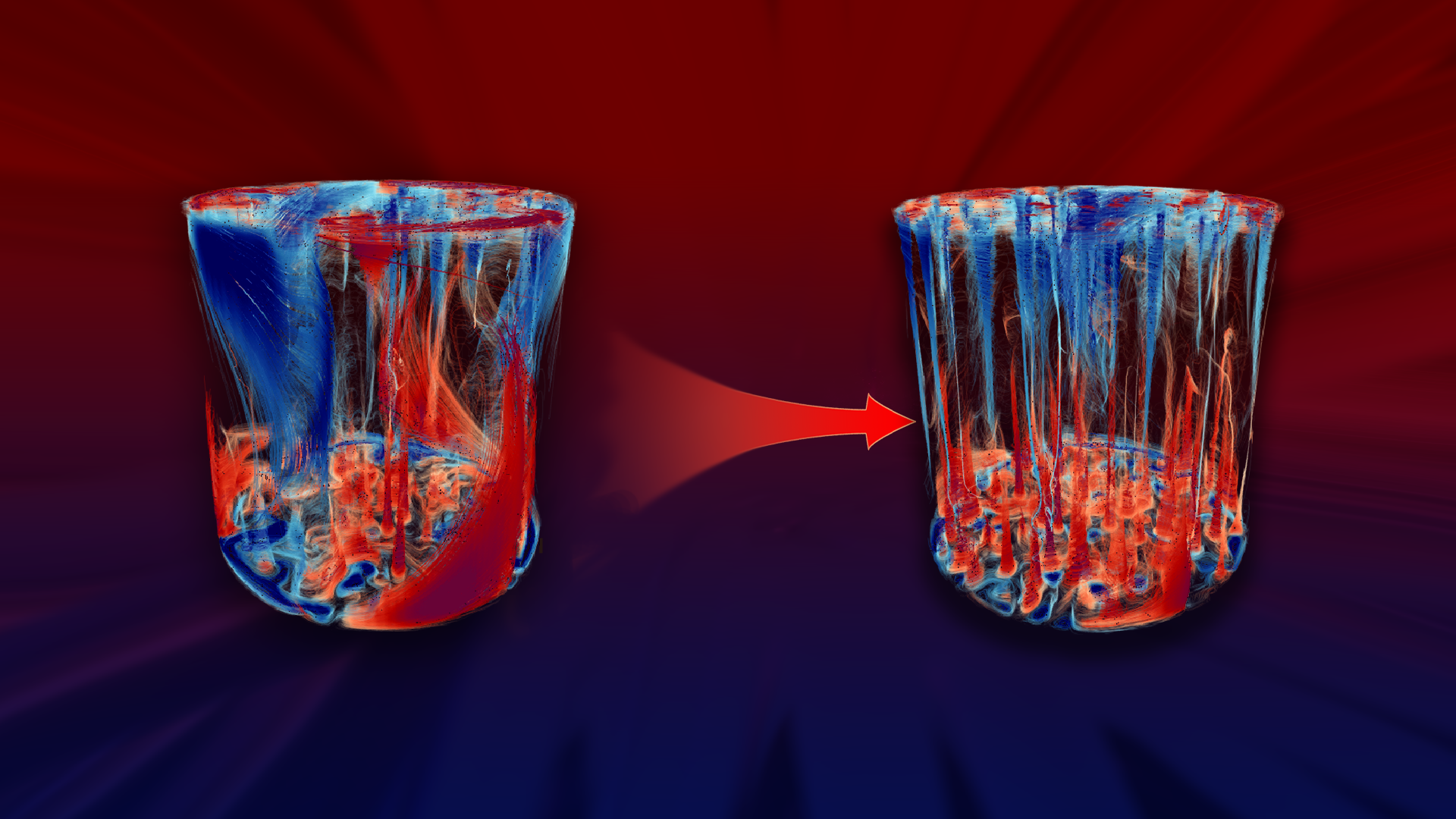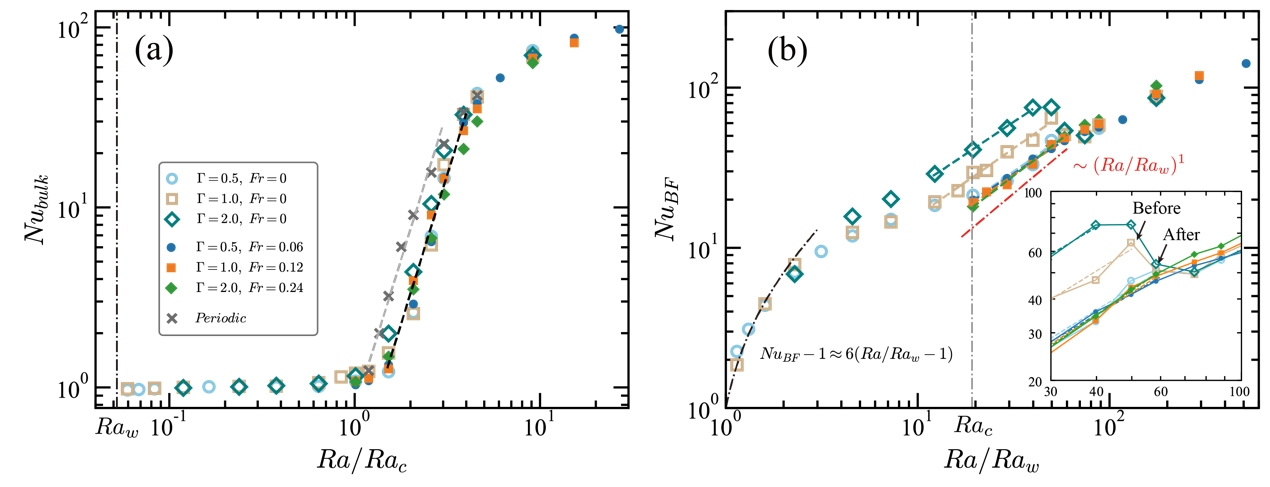Natural convection under the influence of rotation occurs widely in many geo- and astro-physical environments, as well as in industrial applications. Rotating thermal convection serves as an essential fundamental physical system to investigate such systems. Most rotating thermal convection systems in nature do not have well-defined lateral boundaries. But for most practical systems, such as experiments and industrial applications, lateral boundaries are unavoidable.
In the 1990s, researchers discovered the existence of special flow structures near the sidewalls of a convection system, referred to as the wall modes. Even in systems with significant thermal driving and high turbulent intensity, boundary flow structures with features analogous to the wall modes can still be observed. Such boundary flows have distinguishing features with the bulk in terms of heat transfer and flow morphology. However, due to the lack of systematic understanding of the boundary flows, the discrepancy between experiments (with boundary flows) and the simulations in periodic boundary conditions (without boundary flows) remains poorly understood.

Chair Professor Ke-Qing Xia’s research group from the Center for Complex Flows and Soft Matter Research and the Department of Mechanics and Aerospace Engineering at the Southern University of Science and Technology (SUSTech) has recently produced a quantitative study on the heat transfer of the boundary flows in rotating thermal convection systems. Their study has determined the scaling law for the heat transfer efficiency of the boundary flow and provided a theoretical explanation. Such result offers crucial information for unifying previous results for rapidly rotating thermal convection from various experimental and numerical studies.
Their paper, entitled “Heat transport and flow morphology of geostrophic rotating Rayleigh-Bénard convection in the presence of boundary flow”, has been published in the Journal of Fluid Mechanics and selected as a cover article.

To address this issue, Professor Ke-Qing Xia’s group conducted a series of direct numerical simulations. To obtain the quantitative description of the boundary flow, they decomposed the boundary flow and the bulk based on the velocity field. They found that the heat transfer of the bulk region is similar to systems using periodic boundary conditions (Figure 1a). As for the boundary flow, this numerical study provides quantitative results and theoretical explanations for the heat transfer efficiency of boundary flows for the first time (Figure 1b). Combining the contributions from the boundary flow and the bulk, one will then be able to unify the global heat transfer efficiency obtained from experiments and numerical simulations using periodic boundaries.

Figure 1 . Heat transfer efficiency for (a) the bulk and (b) the boundary flow
In addition to heat transfer, the study also discovered the transition of flow morphology of the boundary flows. At lower thermal driving intensities, the flow structure of boundary flows appears in a coherent state, similar to the structure of the wall modes (Figure 2a). However, as the thermal driving enhances, the coherent boundary flow suddenly breaks into vortices (Figure 2b). Moreover, this collapse of flow coherency is accompanied by a sharp decrease in local heat transfer efficiency (Figure 1b insert).

Figure 2. Streamlines for (a) coherent boundary flow state and (b) vortical boundary flow state
These findings provide insights and a foundation for unifying experimental and numerical simulation results under different lateral boundary conditions, bridging a gap in the field of rotating thermal convection. Furthermore, the study shows the connection between the flow morphology and heat transfer in the boundary flow and constitutes an important reference for future studies in the field of rotating thermal convection.
Dr. Guang-Yu Ding, a postdoctoral fellow in Professor Ke-Qing Xia’s group, is the first author of the paper. Chair Professor Ke-Qing Xia is the corresponding author, and SUSTech is the first affiliation unit.
This work was supposed by the National Natural Science Foundation of China (NSFC) and the Hong Kong Research Grants Council.
To read all stories about SUSTech science, subscribe to the monthly SUSTech Newsletter.
Proofread ByAdrian Cremin, Yingying XIA
Photo ByDepartment of Mechanics and Aerospace Engineering